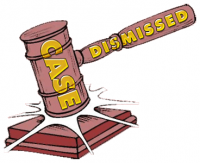
Ford v. Branch Banking & Trust Co. (Nev. Supreme Ct. – July 23, 2015)
Nevada Rule of Civil Procedure (NRCP) 60(b)(5) allows the district court to set aside a judgment when, in material part, a prior judgment upon which it is based has been reversed or otherwise vacated, or it is no longer equitable that an injunction should have prospective application. The issue is whether new or changed precedent from the Nevada Supreme Court justifies NRCP 60(b)(5) relief.
In 2004, the Fords guaranteed two commercial loans made by Colonial Bank. The FDIC subsequently acquired the loans when it was appointed as the receiver for Colonial Bank. The FDIC, in turn, assigned the loans to Branch Banking and Trust Company (BB&T) in August 2009. The properties securing the commercial loans were foreclosed August 29, 2011, and BB&T brought a breach of guaranty action against the Fords in December 2011. After a partial summary judgment hearing, the district court determined that the amount of damages was the only issue remaining for trial.
At trial, the parties disputed whether NRS 40.459(1)(c) (2013) (current version codified at NRS 40.459(3)(c)), which reduces the amount of some deficiency judgments, could limit the amount the Fords owed BB&T. The district court concluded that former NRS 40.459(1)(c) only applied prospectively. Further, it concluded the statute would have an impermissible retroactive effect if applied to loans, like this one, that were assigned before NRS 40.459(1)(c) took effect on June 10, 2011. Therefore, NRS 40.459(1)(c) could not apply to the Fords’ loans, and they were liable for the full deficiency. The Fords never appealed the district court’s final judgment.
More than one year after the district court entered its judgment, the Nevada Supreme Court published Sandpointe Apartments v. Eighth Judicial District Court, 129 Nev., Adv. Op. 87, 313 P.3d 849 (2013). Sandpointe holds that NRS 40.459(1)(c) only applies prospectively, and an application of the statute is prospective if there has been no foreclosure sale on the underlying loan as of June 10, 2011, the date the statute was enacted. Whether or when a loan is assigned is not material. Therefore, the Court noted that the district court erred in holding that NRS 40.459(1)(c) would be retroactive if applied to the Fords’ loans because the foreclosure sale occurred August 29, 2011, more than two months after NRS 40.459(1)(c) took effect. Shortly after the Sandpointe opinion was published, the Fords asked the district court to set aside the judgment against them pursuant to NRCP 60(b)(5). The district court denied the Fords’ motion, holding that NRCP 60(b)(5) was not an appropriate avenue for seeking relief based on new or changed precedent. The Fords appealed that decision.
On appeal, the Fords argued they can invoke NRCP 60(b)(5) to set aside the judgment against them because (1) Sandpointe reversed a prior judgment upon which the judgment against them was based, and (2) it was no longer equitable to enforce the judgment against them in light of this court’s Sandpointe opinion.
The Nevada Supreme Court explained that the material portions of NRCP 60(b)(5) allow the district court to set aside a judgment when [1] a prior judgment upon which the challenged judgment is based has been reversed or otherwise vacated, or [2] it is no longer equitable that an injunction should have prospective application. Rule 60(b) of the Nevada Rules of Civil Procedure is modeled on Rule 60(b) of the Federal Rules of Civil Procedure, as written before the FRCP’s amendment in 2007. Federal cases interpreting the Federal Rules of Civil Procedure are strong persuasive authority, because the Nevada Rules of Civil Procedure are based in large part upon their federal counterparts.
Continue reading “Can a court set aside a judgment solely based on new or changed precedent?”









